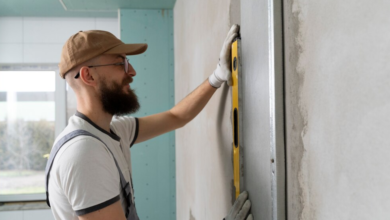How to Extend the Life of Your Thermoforming Machine with Proper Care
Thermoforming machines are a vital component in industries like packaging, automotive, and medical manufacturing. These machines play a crucial role in molding plastic sheets into desired shapes and products. Whether you’re working with a brand-new system or Used Thermoforming Machines, proper care and maintenance are essential to ensure optimal performance and long-term efficiency. In this blog, we’ll explore some practical steps to extend the life of your thermoforming machine, reduce downtime, and maintain production quality.
1. Regular Cleaning and Inspection
Thermoforming machines deal with various plastic materials, which can leave behind debris, dust, and residues. Regular cleaning prevents contamination and ensures smooth operation.
- Daily Inspections: Check for plastic buildup, especially around heating elements and mold areas.
- Cleaning Schedules: Use recommended cleaning agents to remove dust and residue from key components.
- Check for Wear and Tear: Look for cracks, loose parts, or misaligned elements during inspections. Identifying these issues early prevents costly repairs and downtime.
For businesses relying on used thermoforming machines, thorough inspection and cleaning become even more critical to catch any early signs of damage.
2. Lubricate Moving Parts to Avoid Friction
Thermoforming machines contain numerous moving parts, including rollers, chains, bearings, and guide rails, which require regular lubrication to function efficiently. Insufficient lubrication can cause friction, leading to overheating and component failure.
- Use Manufacturer-Recommended Lubricants: Different parts may require specific lubricants to maintain optimal performance.
- Follow a Lubrication Schedule: Ensure parts are lubricated regularly to prevent breakdowns.
- Monitor for Leaks: If you notice excessive lubrication leaks, it could indicate misalignment or worn seals that need replacement.
Proper lubrication is especially important when working with used thermoforming machines to ensure they continue operating smoothly despite previous usage.
3. Calibrate Equipment for Accuracy
Over time, components like heating systems, molds, and cutting stations may lose precision, which can impact product quality. Regular calibration ensures your machine continues to produce accurate and consistent results.
- Check Temperature Controls: Heating elements should maintain precise temperatures to prevent under- or over-heating of materials.
- Inspect Mold Alignment: Misaligned molds can cause defects in final products.
- Calibrate Cutting Mechanisms: If your machine includes a cutting function, ensure it is adjusted to prevent uneven cuts or material wastage.
Routine calibration is critical not only for new machines but also for used thermoforming machines that may have experienced wear over time.
4. Train Operators on Proper Usage
Operator errors are a common cause of equipment malfunctions and downtime. Training machine operators on proper procedures can significantly reduce the risk of damage and ensure smoother operation.
- Provide Hands-On Training: Teach operators how to handle materials, adjust settings, and troubleshoot minor issues.
- Encourage Preventive Maintenance Practices: Operators should know how to identify early warning signs of potential problems.
- Establish Usage Protocols: Limit access to authorized personnel only and implement protocols for shutting down the machine during off-hours.
When using thermoforming machines, specific training on older models or legacy systems may be necessary to ensure operators are familiar with the equipment.
5. Monitor Key Performance Indicators (KPIs)
Tracking your machine’s performance through relevant KPIs helps you identify declining efficiency before it becomes a major issue.
- Monitor Cycle Times: Longer cycle times could indicate wear in heating elements or mechanical components.
- Track Reject Rates: An increase in defective products could point to calibration or mold issues.
- Analyze Energy Consumption: Sudden spikes in energy usage may signal inefficiencies in heating systems or motors.
Monitoring KPIs allows you to act proactively, making necessary adjustments or scheduling repairs to maintain the longevity of your thermoforming equipment.
6. Keep Spare Parts on Hand
Unexpected breakdowns can bring production to a halt, especially if you have to wait for replacement parts. Keeping essential spare parts on hand reduces downtime and ensures quick repairs.
- Identify Critical Components: Stock items like heaters, seals, sensors, and belts that are prone to wear.
- Maintain an Inventory Log: Keep a record of used parts and restock inventory as needed.
- Source Parts for Older Machines: If you’re using used thermoforming machines, finding replacement parts may take longer. Proactively identify suppliers for legacy components.
Having a well-organized spare parts inventory ensures your maintenance team can handle repairs swiftly.
7. Implement Preventive Maintenance Programs
A preventive maintenance program is a structured approach to keeping your machine in peak condition. It involves scheduled inspections, part replacements, and testing to prevent unexpected breakdowns.
- Create a Maintenance Checklist: Outline tasks such as cleaning, lubrication, calibration, and part inspection.
- Set Maintenance Intervals: Follow the manufacturer’s recommendations for routine maintenance schedules.
- Use Digital Logs: Maintain a digital record of maintenance activities to track performance and identify trends.
Preventive maintenance ensures both new and used thermoforming machines remain reliable throughout their service life.
8. Upgrade Components When Necessary
As technology evolves, upgrading certain components in your thermoforming machine can improve performance and efficiency.
- Upgrade Control Panels: New control systems with better interfaces can improve machine operation and monitoring.
- Install Energy-Efficient Parts: Replacing old motors or heaters with energy-efficient models can reduce power consumption.
- Add Automation Features: Upgrading to automated components can streamline production and reduce the chances of operator error.
Upgrading parts is especially beneficial for used thermoforming machines, giving them a new lease on life with modern features and improved efficiency.
Conclusion
Extending the life of your thermoforming machine requires a combination of regular maintenance, operator training, and proactive monitoring. Whether you’re working with a new system or Used Thermoforming Machines, following best practices like cleaning, lubrication, calibration, and preventive maintenance will ensure reliable performance over time.
By implementing these strategies, businesses can reduce downtime, maintain product quality, and maximize the return on their equipment investment. Thermoforming machines are significant assets, and proper care not only extends their lifespan but also ensures smooth production and long-term success.





